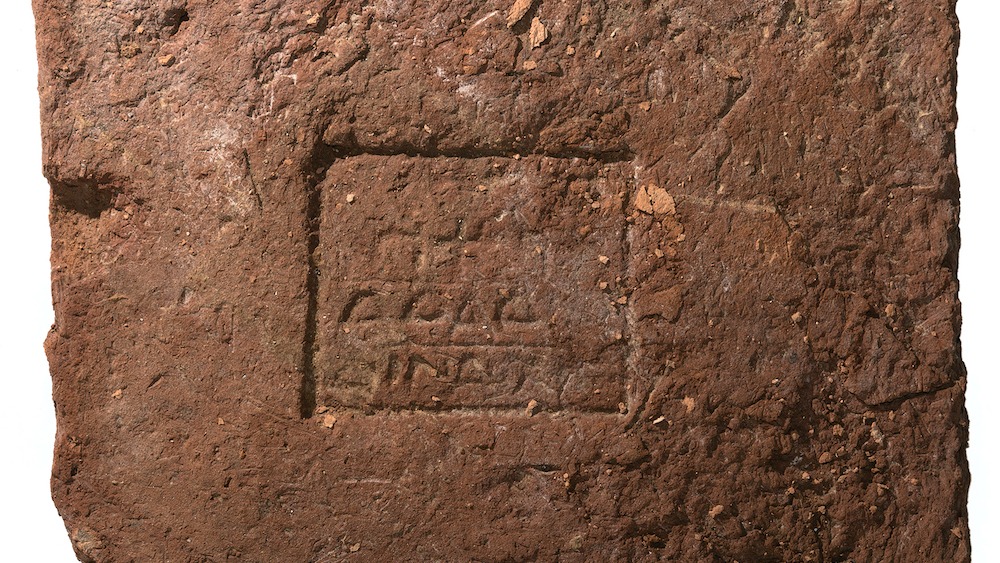Temple linked to Hercules and Alexander the Great discovered in ancient megacity in Iraq
Archaeologists have discovered two temples, one buried atop the other, in the ancient megacity of Girsu in Iraq. One temple is linked to Hercules and Alexander the Great.

Archaeologists in Iraq have unearthed twin temples built on top of each other. The newer, Hellenistic temple dates to the fourth century B.C. and may have a link to Alexander the Great.
The temple contained a fired brick with an Aramaic and Greek inscription that references "the giver of two brothers" — a possible reference to the Macedonian king, who conquered much of the known world during his 13-year-reign from 336 B.C. to 323 B.C.
Archaeologists from the British Museum in London discovered the older temple while conducting excavations at Girsu, a Sumerian city now known as Tello in southeastern Iraq. The excavations are part of an ongoing venture conducted by the museum known as The Girsu Project that focuses on learning more about the city’s storied history.
Remnants of the older, Sumerian temple were found buried "on the exact same spot" as the newer construction, which was dedicated to the "Greek god Hercules and his Sumerian equivalent, the hero god Ningirsu [also known as Ninurta]," Sebastien Rey, an archaeologist and curator of Ancient Mesopotamia at the British Museum who led the excavation, told Live Science in an email.
The fact that a temple was raised on the same site where one stood 1,500 years earlier was no coincidence, and the site must have held some significance to the people of Mesopotamia, the researchers said.
Related: 2nd-century Alexander the Great statue with lion's-mane hairstyle unearthed in Turkey
"It shows that the inhabitants of Babylonia in the [fourth] century B.C. had a vast knowledge of their history," Rey said. "The legacy of the Sumerians was still very vibrant."
Get the world’s most fascinating discoveries delivered straight to your inbox.
While exploring the dual temple site, archaeologists discovered a silver drachm (an ancient Greek coin) buried beneath an altar or shrine, as well as a brick with the two brothers inscription.
"The inscription is very interesting because it mentions an enigmatic Babylonian name written in Greek and Aramaic," Rey said. "The name 'Adadnadinakhe,' which means 'Adad, the giver of brothers,' was clearly chosen as a ceremonial title on account of its archaizing tone and symbolic connotations. All the evidence points to the fact that the name was extraordinarily rare."
The inscription itself is a nod to Zeus, the Greek sky god, who is often symbolized by a lightning bolt and an eagle. Both of these symbols can be found on the coin, which would've been struck in Babylon "under Alexander the Great's authority," Rey said. "It shows Hercules in a youthful, clean-shaven portrait that strongly recalls conventional representations of Alexander on one side, with Zeus on the other."
Zeus also "famously acknowledged Alexander as his son through the agency of the Ammon oracle,” Rey said. "He became quite literally the 'giver of brothers' because he affirmed a fraternal bond between Alexander and Heracles."
However, researchers don't yet know whether the Macedonian king actually visited the site.
"But he might have had the opportunity to go there, either during his stay in Babylon, or by taking a detour on the way to [the city of] Susa," he said. "Significantly, he was able to pay his soldiers after taking Babylon because the city's coffers were surrendered to him. This meant that Alexander and his generals had control of the region's wealth, and they presumably used Babylonian silver to mint the many coins that were struck in the city."
In addition to the artifacts, researchers also found offerings normally given after a battle, including clay figurines of soldiers.
"The recovered figurines, which originated in a range of places in the Hellenistic world, must in many instances have been carried to the temple by visitors," he said. "Among these are the Macedonian riders on horseback, which have strong associations with Alexander. However, they could also be associated with a cult of warlike heroism.
"Combined with the clear signs of an Alexandrian presence in the shrine, this raises the intriguing possibility that Alexander was directly and actively instrumental in [the temple's] re-establishment, and (or) that it came to include a memorial to the departed Macedonian after his early death," Rey concluded.
Jennifer Nalewicki is former Live Science staff writer and Salt Lake City-based journalist whose work has been featured in The New York Times, Smithsonian Magazine, Scientific American, Popular Mechanics and more. She covers several science topics from planet Earth to paleontology and archaeology to health and culture. Prior to freelancing, Jennifer held an Editor role at Time Inc. Jennifer has a bachelor's degree in Journalism from The University of Texas at Austin.



